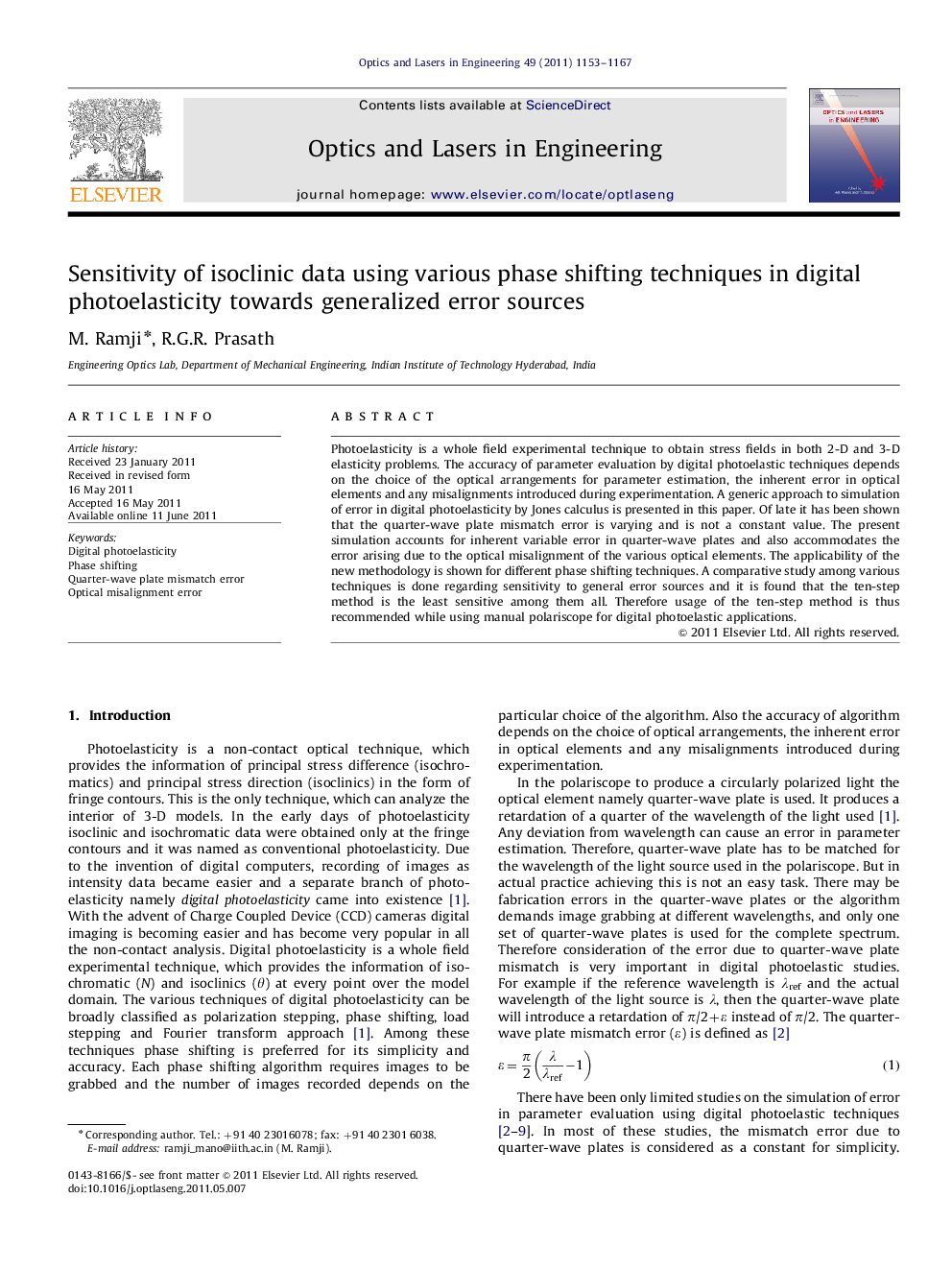| Article ID | Journal | Published Year | Pages | File Type |
|---|---|---|---|---|
| 735794 | Optics and Lasers in Engineering | 2011 | 15 Pages |
Photoelasticity is a whole field experimental technique to obtain stress fields in both 2-D and 3-D elasticity problems. The accuracy of parameter evaluation by digital photoelastic techniques depends on the choice of the optical arrangements for parameter estimation, the inherent error in optical elements and any misalignments introduced during experimentation. A generic approach to simulation of error in digital photoelasticity by Jones calculus is presented in this paper. Of late it has been shown that the quarter-wave plate mismatch error is varying and is not a constant value. The present simulation accounts for inherent variable error in quarter-wave plates and also accommodates the error arising due to the optical misalignment of the various optical elements. The applicability of the new methodology is shown for different phase shifting techniques. A comparative study among various techniques is done regarding sensitivity to general error sources and it is found that the ten-step method is the least sensitive among them all. Therefore usage of the ten-step method is thus recommended while using manual polariscope for digital photoelastic applications.
► A generic approach to simulation of error in digital photoelasticity by Jones calculus is presented. ► Impact of photoelastic parameters by variable quarter-wave plate mismatch error. ► Optical misalignment error for various phase shifting techniques is presented. ► Usage of the ten-step method is recommended while using manual polariscope for digital photoelastic applications.
